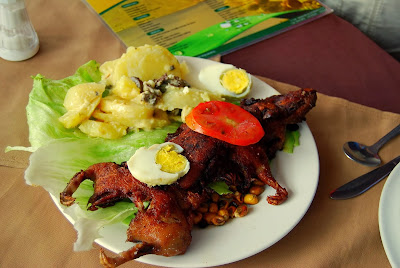Galapagos Weather and Galapagos Climate
You can visit Galapagos Islands at any time.
The islands are isolated, so the Galapagos climate is, determined almost entirely by the ocean currents, which in turn are influenced by the trade winds which push the currents. The Galapagos is a major intersection of several currents, which vary in intensity during the year as their driving trade winds blow and then weaken in a cycle that gives two distinct seasons to the islands. These currents also control the pattern and variety of Galapagos plant and animal life.
The Galapagos climate is unusually dry for the tropics. There are two main seasons, each of which has a dramatic effect on the vegetation.
From January to June, air temperatures are warm and the skies are usually clear with occasional heavy rain showers.
From June to December, the air is cooler from 24 to 16°C, the skies are often lightly overcast or cloudy, and there is virtually no precipitation in the lowlands, while the highlands are almost continually wet with light rain "showers" called "garua".
The January to June season is known as the warm/wet season and the July to December as the garua or cool/dry season. During the garua season, prevailing winds are from the southeast and the sea is often choppy, while during the warm/wet season winds from the east prevail, and the sea is gentler. Between seasons, the weather is highly variable and unpredictable.
This inter seasonal period may last as much as a couple of months and the dates may vary from year to year. The climate in different parts of the archipelago is also varied. Sea temperature in the islands ranges from as low as 16°C to as high as 28°C, depending on season and site.
The Galapagos weather are distant from any other land mass, and consequently their climate is largely determined by the ocean currents which bathe the archipelago. During the garua season, cooler waters from the Humboldt (Peru) Current are dominant with average sea temperatures of 22°C in Academy Bay. As a result, air temperatures are cool and an inversion layer is created. The moisture evaporating from the sea is concentrated in this inversion layer (300 to 600 m above sea level) and only the higher parts of islands, which intercept this layer, receive rain. The lowland areas remain dry, though cool.
The variation in rainfall with altitude is a result of this inversion layer and has important consequences for the zonation of vegetation. Not only do higher parts of the islands receive more rain but this rain is concentrated on the southern and eastern slopes. The northern slopes of islands, and islands in the rain shadow of other islands, remain much drier.
During the warm season, the southeast trade winds, which drive the cool currents, diminish in strength and warmer waters from the Panama Basin flow through the islands. The average sea temperature in Academy Bay rises to 25°C.
The warmer waters cause the cool season inversion layer to breakup and normal convective cloud-forming occurs. The islands experience a more typical tropical climate with blue skies and occasional heavy rain showers.
In some years, the flow of warm waters is much greater than normal, and an "El Niño" year results. Surface water temperatures are higher and rainfall can increase greatly. Life on land burgeons but seabirds, which depend on the productive cooler waters, may experience dramatic breeding failures.

























.jpg)